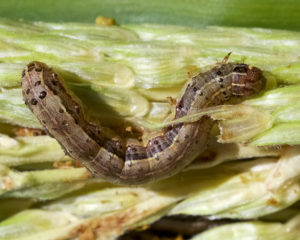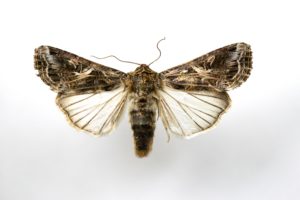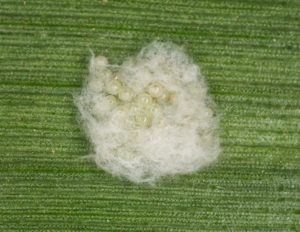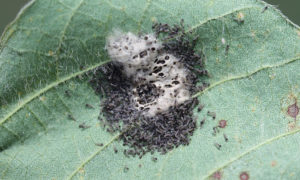Occasional Pests
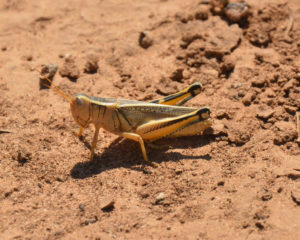
Figure 49. Adult differential grasshopper. Photo by Suhas Vyavhare.
Grasshoppers
The most common grasshopper species in Texas cotton are the lubber grasshopper, differential grasshopper, and migratory grasshopper (Fig. 49). Lubber grasshoppers move quite slowly and travel by feebly walking and crawling over the soil surface. They most commonly damage presquaring cotton, while the other winged and more agile species invade large-bloom to open-boll stage cotton as pastures dry down.
Depending on the conditions in a particular year, early in the spring, populations may be high in pastures, rangeland, and other noncrop areas.
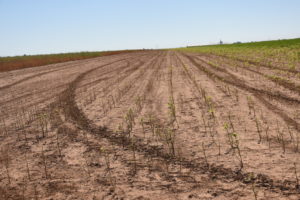
Figure 50. Grasshopper damage. Photo by Suhas Vyavhare.
Large populations of winged grasshoppers occasionally occur mid-to-late summer.
Usually, grasshoppers feed on cotton foliage without causing much damage. But, they can be very destructive to seedling cotton and destroy stands during large outbreaks, especially at the field edges. Grasshoppers rarely damage older cotton.
Scouting and Decision Making
Treat when unacceptable stand loss or severe defoliation (more than 30 percent) is evident and grasshoppers are present (Fig. 50). Control damaging infestations early while the grasshoppers are small, wingless, and still in crop border areas (Fig. 51). In many cases, field edge treatments can stop the damage.
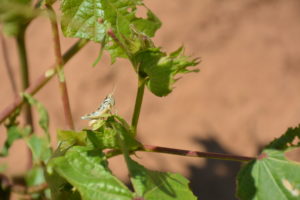
Figure 51. Grasshopper nymph. Photo by Suhas Vyavhare.
Lygus Bugs
There are three predominant species of lygus in Texas cotton: the western tarnished plant bug, the tarnished plant bug, and the pale legume bug. The western tarnished plant bug is the most common species in the western half of Texas, and the tarnished plant bug dominates in the eastern half of the state. These species are similar in appearance, biology, and the damage they cause. In this publication, we will call them lygus and discuss them as a single pest.
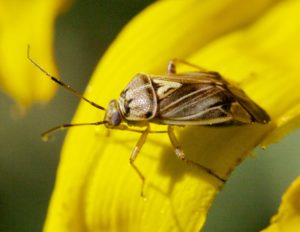
Figure 52. Adult lygus bug. Photo by Pat Porter.
Lygus bugs feed on cotton terminals, squares, flowers, and small bolls. Adults are ¼ inch long, have a conspicuous dark-colored triangle in the center of the back, have wings, and vary from pale green to yellowish brown with reddish brown to black markings (Fig. 52). Nymphs (immatures) are uniformly pale green with red-tipped antennae; late instars have four conspicuous black spots on the thorax and one large black spot near the base of the abdomen (Fig. 53). The nymph’s wings are not developed, but they can move rapidly and are difficult to detect in cotton foliage. It is easy to mistake small nymphs with aphids, cotton fleahoppers, and leafhopper nymphs, but their broader shape, quick movements, larger size, and the specific characteristics discussed above help differentiate them.
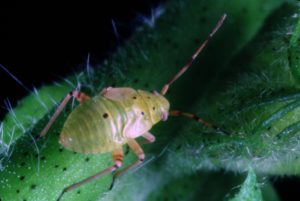
Figure 53. Lygus bug nymph. Photo by Winfield Sterling
Lygus bugs prefer legumes to cotton and usually occur in large numbers in alfalfa, potato fields, or on wild hosts such clovers, dock, mustard, pigweed, Russian thistle, vetches, and wild sunflower. Lygus bugs are attracted to succulent growth (Fig. 54). In cotton, their feeding causes:
- Deformed bolls
- Dirty bloom (damaged anthers in blooms) and puckered areas in petals
- Shedding of squares and small bolls
- Stunted growth
- Small black spots or small, dark, sunken lesions on the outer surface of the developing bolls that can penetrate the boll carpel wall and damage developing seeds or lint
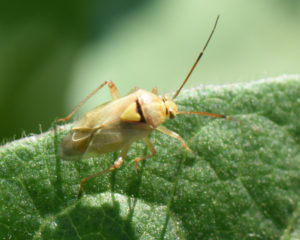
Figure 54. Adult lygus bug. Photo by Suhas Vyavhare.
Scouting and Decision Making
The abundance of lygus bugs in relation to the fruiting condition of the cotton plants determines the need for control measures. Inspect fields for lygus bugs at 4- to 5-day intervals throughout the fruiting period.
Before peak bloom, using a sweep net is the most accurate way to sample for lygus. After peak bloom, a drop cloth is best. How to use beat bucket, drop cloth, and sweep net sampling are discussed in the scouting section of this guide on pages 5 and 6. Research in Arizona and California indicates that the western tarnished plant bug may be more difficult to control with insecticides and may require using higher labeled rates of suggested insecticides.
Spider Mites
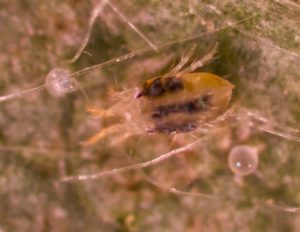
Figure 55. Twospotted spider mite. Photo by Pat Porter.
Two species of mites commonly feed on cotton plants in Texas: the twospotted spider mite and the carmine spider mite. These two species are difficult to distinguish from one another. Carmine spider mite females are red; twospotted spider mites are greenish. When conditions are suitable for initiating diapause (dormancy), female twospotted spider mites may also be red. Because the damage they inflict and their biology and ecology are similar, we will discuss them as one pest for this guide (Fig. 55).
Spider mites can infest cotton at any point in the growing season, but cotton is most susceptible to injury from spider mites during fruiting periods and when the crop suffers water-deficit stress. Spider mites infest the underside of leaves (Fig. 56).
Infestations most often develop in hot spots in fields, near grain crops, and at dusty field margins. Spider mite infestations are often made worse by broad-spectrum insecticide applications that target other pests. High winds or equipment from infested crops nearby can move mites from one location to another.

Figure 56. Twospotted spider mite infestation on the underside of a cotton leaf. Photo by Salvador Vitanza.
They feed by piercing plant cells with their mouthparts and sucking the liquid contents of the cells. Damaged leaves develop white or yellowish specks, called stipules. Specking damage is Phase I damage. As feeding increases and the mites persist, the damage spreads, leaves develop a reddened appearance (Phase II damage), and eventually turn brown. This damage affects cotton photosynthesis, which appears to decline sharply at Phase II, or about 20 mites per leaf.
Spider mites also infest bracts of squares and bolls, causing the bracts to desiccate (dry up). Heavy and prolonged spider mite infestation can prematurely defoliate cotton plants. Spider mite injury can reduce cotton yield, fiber quality, and seed.
Management and Decision Making
Hot, dry weather favors spider mite infestations. Conversely, high relative humidity and precipitation deter spider mite infestations by washing them off leaves and creating conditions that favor disease outbreaks. Since spider mite outbreaks tend to develop on field borders adjacent to spider-mite-infested weeds or other crops, managing weeds along field margins often prevents the mites from migrating into cotton. Avoid excessive nitrogen fertilizer because spider mite outbreaks occur more frequently in fields fertilized with higher than necessary nitrogen rates. Spider mite populations often develop where dust from roads blows onto cotton plants, possibly interfering with natural enemy efficiency.
The spider mite treatment threshold has not been fully worked out, but the following formula provides general guidelines for treatment. Before bloom, scout cotton for leaf damage to protect it from spider- mite-induced defoliation. After bloom, protect leaves responsible for boll filling from spider mite damage until 650 to 750 DD60s beyond cutout or NAWF + 5. Because spider mite populations are often clumped together, particularly along field edges, spot treating infested areas often prevents spread and can be cost-effective. Consider alternatives to pyrethroids for managing pests such as bollworms and lygus. Also, consider selective insecticides such as neonicotinoids for aphid control when mites are present. Maximize insecticide coverage when treating for mites. Drop nozzles and high spray volumes can significantly enhance mite control.
Fall Armyworms
There are two host strains of fall armyworms: the rice strain and the corn strain. The rice strain is associated with rice, Bermudagrass, and other pasture grasses. The corn strain is the predominant fall armyworm on corn, sorghum, and cotton. Other than feeding habits, these strains are indistinguishable without using molecular identification techniques (Fig. 57).
Fall armyworm moths (Fig. 58) lay their eggs in masses (Fig.59), and, unlike beet armyworms, the larvae quickly disperse from the egg mass (Fig. 60). First and second instar larvae are difficult to distinguish from other armyworm species and bollworms. Fall armyworm larvae are usually greenish-brown with a white line below the top of the back, a brownish-black stripe above the midline, and a pale stripe with a reddish-brown tinge below. Their most distinctive characteristic is a prominent, white inverted “Y” on the front of the head (Fig. 61). Black hairs on their bodies distinguish them from beet armyworms. Because bollworms also have hairs on their bodies, this characteristic may lead to confusion between small fall armyworms and small bollworms. Fall armyworm larvae also have four large spots that form a square on the upper surface of the last body segment.
When larvae are large, these spots help differentiate fall armyworms from bollworms. Depending on the strain of fall armyworm, damage to cotton may be nonexistent to severe. Although rare, rice strain larvae have been seen dispersing from pastures into cotton where they fed exclusively on grassy weeds. The corn strain larvae, however, can do extreme damage to cotton. Fall armyworms that feed on cotton are typically more damaging than other armyworm species because they tend to feed on fruiting structures, especially bolls. However, they do not feed as voraciously on fruit as bollworms do and their populations develop more in grain crops such as corn and grain sorghum in preference to cotton.
When abundant in prebloom cotton, fall armyworms may cause defoliation, but the greatest damage comes from topping the plants) branches cut off and stalks almost severed. The most damaging populations of fall armyworms are those that occur during boll filling.
Because fall armyworms quickly disperse away from the egg mass, which is often inside the plant canopy, it is not uncommon to find small larvae individually feeding on squares, bolls, and bloom tags, much like a bollworm. Because, like bollworms, they are cryptic (hidden/concealed) feeders, they are easy to miss and often first noticed feeding in blooms.
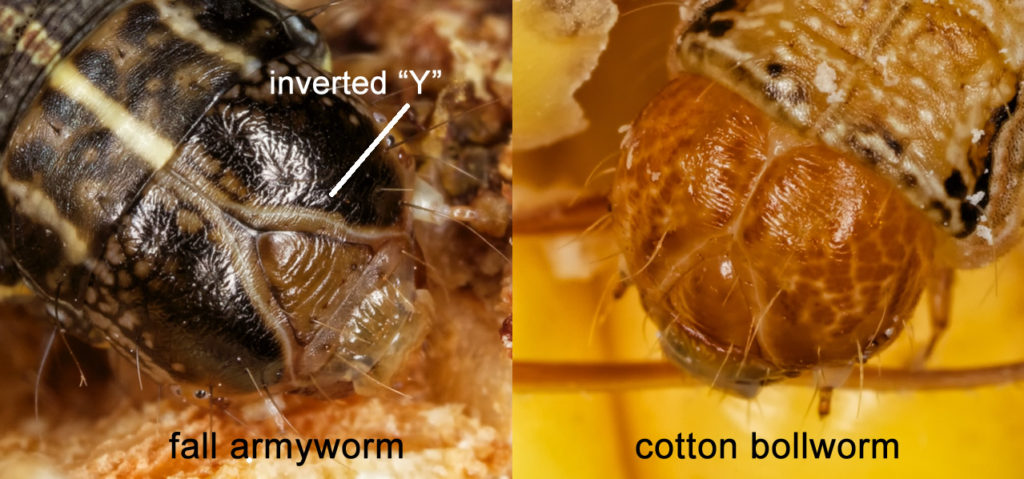
Figure 61. Prominent inverted Y on the head of the fall armyworm. Photo by Pat Porter
Occasionally, fall armyworms will feed in fairly high numbers on Bt cotton blooms. In these cases, the blooms may not have produced high enough levels of Bt toxins to kill them. There have been some instances where these larvae have completed their entire life cycle feeding exclusively on Bt cotton blooms without causing significant boll damage or pollination issues.
Management, Scouting, and Decision Making
Currently, planting Bt cotton is the most effective way to control fall armyworms. Third-generation Bt cotton with three toxins (Bollgard 3, WideStrike 3, and TwinLink Plus) develop lower fall armyworm populations compared to second-generation Bt cotton. However, areas with heavy fall armyworm pressure may occasionally require treatment. Large acreages of cotton, particularly in the South Plains and Panhandle, are still planted in varieties that do not contain the Bt genes. These fields may become infested with fall armyworms.
Field monitoring is essential in Bt cotton because fall armyworm populations may develop, particularly on blooms and, late in the season, on stressed cotton with compromised Bt toxin production. Thresholds in Bt cotton fields are based upon surviving second and third instar larvae and not upon newly hatched larvae. Because newly hatched larvae must feed on the plant for the Bt toxin to be effective, delay decision making until you can determine how many larger larvae (worms) are surviving.
Small fall armyworms are difficult to distinguish between bollworms and budworms. Unless you find these larvae feeding in a mass, include them with the bollworm and budworm counts. To detect fall armyworm populations and make management decisions, inspect whole plants using the techniques described above for bollworm and tobacco budworm.
Chemical Control and Action Thresholds
When you detect larger, distinguishable worms, note whether they are bollworms, budworms, or fall, beet, or yellow-striped armyworms because control tactics for these species will differ.
Bollworms and budworms are often controlled with pyrethroids. But, pyrethroids are weak against armyworms, which are typically controlled with a variety of insecticides that tend to be weak against bollworms. If you have mixed populations of armyworms and bollworms, use tank mixes of insecticides to achieve adequate control and prevent damage.
Because of the similarity in damage and difficulty in distinguishing small fall armyworm larvae from bollworms, include them along with bollworm and budworm counts and base your treatment decisions on the cumulative total of caterpillars counted.
